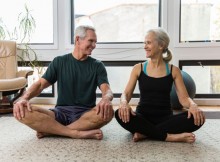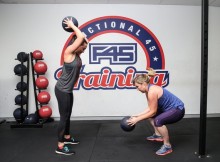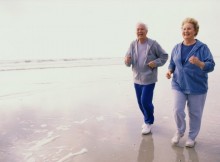How Do the Pulse Sensors Work on Exercise Machines?
Advertisements
When exercising, knowing some statistics about your exercise can help you determine whether you have achieved your fitness goals for the day. For example, you might be interested in how many calories you burn, or how far you run on a treadmill. To get the most effective training, track your heart rate and try to keep it in your target area. Using a pulse sensor built into many machines, you can read your heart rate with both hands to help you determine your heart rate.
Advertisements
 holding the pulse sensor in your hand can help you find your heart rate. (picture: Stock / Polka Dot / Getty picture)
holding the pulse sensor in your hand can help you find your heart rate. (picture: Stock / Polka Dot / Getty picture) what they are
pulse sensors, also known as heart rate sensors, find the pulse through the skin of the hand. The sensor is usually a silver metal area, which is located on the support bar or mobile arm of the fitness equipment. Some have a large sensor on each side, while others have two closely connected sensors on each side. They can read tiny electrical signals through the skin and amplify them, converting them into numbers that you can recognize - estimating the number of beats per minute. How to find the pulse on most exercise machines? Turning on the machine can let you check your heart rate immediately and let you know your resting heart rate. In many cases, you grab the rod on the metal sensor and make sure your hand completely covers the sensor - all sensors, if there are two on each side of the machine. When you exercise, either put your hand on the sensor and watch your heart rate increase, or hold the sensor regularly to check your heart rate. If the sensors are not equal to 39, read your heart rate, either because your hands are too dry or too wet, or they are 39, and the T position is correct. Accuracy of the pulse sensor They are often quite accurate, but to get a more accurate heart rate number, use another monitor - one tied to the chest. Many fitness equipment is not included, but if you have one, you can buy one or borrow one from the gym. The chest band monitor provides continuous and accurate numbers, but may not be comfortable to wear throughout the training process. Manually select
when your exercise machine does not provide a pulse sensor or you want to verify its number, check your own heart rate with the old-fashioned method. Place both fingers on the side of the neck or the inside of the wrist until you feel the pulse. Look at a clock and count the number of pulses you feel in 10 seconds. Multiply this number by six to show your heart rate per minute. Your heart rate should be between 50 and 85% of your maximum heart rate, and you can subtract your age from 220. So if you're 39, 35, your maximum heart rate is 185. If you want to maintain 75% of your target heart rate, you need to pay attention to 138 beats per minute.




